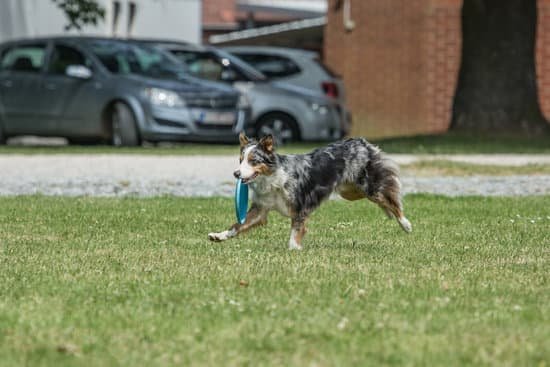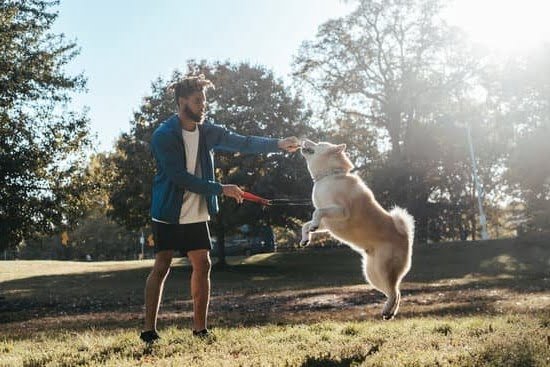In Sight?
Training your dog to stop eating everything in sight is a process that takes time and patience. There are a few basic things you can do to start the training process:
1. Make sure your dog is getting enough exercise. A dog that is bored or restless is more likely to eat everything in sight.
2. Feed your dog a healthy diet. Obesity is a major problem for dogs and can lead to health problems such as diabetes and joint pain.
3. Provide your dog with plenty of toys and chew bones to keep him occupied.
4. Correct your dog when he eats something he shouldn’t. This will help him to understand that you don’t want him to eat everything he sees.
5. Be consistent with your training. If you slip up occasionally, your dog will not understand what you expect from him.
The key to training your dog to stop eating everything in sight is to be patient and consistent. It may take a while for your dog to fully understand what you want him to do, but with patience and perseverance, you can get him to stop eating everything he sees.
How To Train Your Dog To Stop Jumping On You
Dogs jumping up is a common behavior problem. Fortunately, there are ways to train your dog to stop jumping on you.
The first step is to teach your dog to “sit.” Once your dog is sitting, give him a treat and pet him. Once your dog is responding consistently to “sit,” you can begin to work on the jumping.
When your dog jumps on you, say “off” in a firm voice. If your dog continues to jump, turn your back on him and ignore him until he sits. Once he sits, give him a treat and pet him.
Be consistent with your commands and rewards, and soon your dog will stop jumping on you.
Training A Dog To Stop Barking When You Leave
Leaving your home can be a stressful experience for both you and your dog. One of the most common reasons dogs bark when their owners leave is separation anxiety. Fortunately, there are several things you can do to train your dog to stop barking when you leave.
The first step is to determine why your dog is barking. If your dog is barking out of excitement or because he’s happy to see you, you’ll need to ignore him until he calms down. If your dog is barking out of anxiety or fear, you’ll need to provide him with a sense of security before you leave. One way to do this is to establish a routine and stick to it. For example, always leave for work at the same time each day and always come home at the same time.
You can also help your dog feel secure by leaving him with a toy or bone. You can also try training your dog to “stay” or “lie down” when you leave. If your dog is still barking when you leave, you can try spraying him with a water bottle or using a loud noise to startle him. However, you should only use this as a last resort, as it can be stressful for your dog.
If you’re having trouble training your dog to stop barking when you leave, you may need to seek the help of a professional trainer. A professional trainer can help you determine why your dog is barking and provide you with tips and tricks to help train him.
How To Train Dog To Stop Barking At The Door
One of the most common complaints that people have about their dogs is that they bark excessively. barking at the door is one of the most common types of barking, and it can be extremely frustrating for the people who live in the house. If your dog is barking at the door, there are a few things that you can do to help train them to stop.
The first thing that you need to do is determine why your dog is barking at the door. There are a number of different reasons that this might be happening, and each one will require a different approach to training. Some of the most common reasons that dogs bark at the door include excitement, fear, territoriality, and boredom.
If your dog is barking out of excitement, the best way to train them to stop is to start by teaching them to sit and stay. When your dog is sitting and staying, give them a treat and praise them. Once they have mastered this, start asking them to stay while you open the door. If they get up, put them back in position and try again. Once they are able to stay in position while you open the door, start opening it a little bit and then closing it. Once they are able to stay in position while the door is open, you can start letting them outside.
If your dog is barking out of fear, you will need to start by teaching them to come when called. Once they are responding consistently to come when called, start asking them to come when you are at the door. If they don’t come, put them back in position and try again. If they come to you, give them a treat and praise them. Once they are coming consistently when called, start opening the door a little bit and then closing it. Once they are able to come when called while the door is open, you can start letting them outside.
If your dog is barking out of territoriality, you will need to start by teaching them to stay. Once they are able to stay in position, start asking them to stay while you open the door. If they get up, put them back in position and try again. Once they are able to stay in position while you open the door, start opening it a little bit and then closing it. Once they are able to stay in position while the door is open, you can start letting them outside.
If your dog is barking out of boredom, you will need to start by teaching them to come when called. Once they are coming consistently when called, start asking them to come when you are at the door. If they don’t come, put them back in position and try again. If they come to you, give them a treat and praise them. Once they are coming consistently when called, start playing with them for a few minutes before asking them to stay. Once they are able to stay in position, start asking them to stay while you open the door. If they get up, put them back in position and try again. Once they are able to stay in position while you open the door, start opening it a little bit and then closing it. Once they are able to stay in position while the door is open, you can start letting them outside.
If you are consistent with these training techniques, your dog should start stopping their excessive barking at the door in no time.
Training Dog To Stop Pulling On Lead
There are a few things you can do to train your dog to stop pulling on the lead. One method is to use a leash with a harness attached, which will help to distribute the pulling force more evenly. You can also use a special collar called a head halter, which will help to control your dog’s head and neck.
When you start to train your dog, you should always begin with basic obedience commands such as sit, stay, and come. Once your dog has mastered these commands, you can start to work on teaching them not to pull on the lead.
To start, you should begin by walking your dog in a calm, quiet area. When your dog starts to pull on the lead, you should immediately stop walking and wait for your dog to calm down. Once your dog is calm, you can start walking again. You should continue to do this until your dog understands that they will not get anywhere by pulling on the lead.
If your dog starts to pull again, you should stop walking and wait for them to calm down. Once they are calm, you can start walking again, but increase the amount of time you wait for them to calm down each time they pull. This will help to teach them that they will not get anywhere by pulling on the lead.
In addition to stopping and waiting for your dog to calm down, you can also use a correction method. When your dog starts to pull on the lead, you should give them a quick tug and then stop walking. You should then wait for your dog to calm down before you start walking again.
You should continue to use both the stop and wait method and the correction method until your dog understands that they should not pull on the lead. Once they have mastered this, you can start to walk them in more populated areas and allow them to explore.

Welcome to the blog! I am a professional dog trainer and have been working with dogs for many years. In this blog, I will be discussing various topics related to dog training, including tips, tricks, and advice. I hope you find this information helpful and informative. Thanks for reading!





